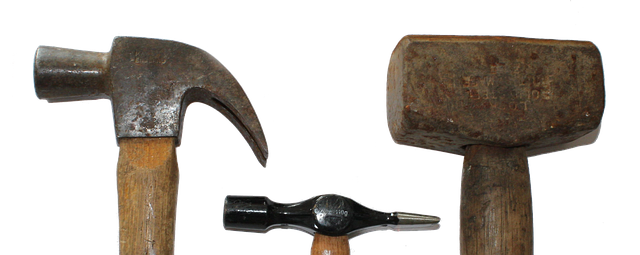DIY enthusiasts face challenges in home repair due to lack of preparation, inadequate skills, underestimation of projects, incompatible materials, incorrect techniques, and poor planning. Success requires addressing these mistakes through knowledge acquisition, proper tool gathering, accurate time estimation, compatible material selection, best practice adherence, and workspace organization. Essential tools like screwdrivers, hammers, pliers, and measuring tapes, coupled with online resources including how-to videos and guides, empower enthusiasts to tackle tasks with confidence. Regular repair and maintenance—including leak checks, electrical inspections, tool sharpening, cleaning, surface protection, detector testing, and plumbing inspections—prevents failures, saves costs, and fosters a comfortable living space.
Struggling with a less-than-perfect DIY project? Don’t panic! This guide provides handyman solutions to turn your DIY failures into successes. We’ll explore common causes behind those frustrating projects gone wrong, equip you with essential tools and resources, and share preventive measures for smoother home repair and maintenance in the future. Whether beginner or seasoned DIYer, these tips will empower you to tackle challenges head-on.
- Understanding Common DIY Failures and Their Causes
- Essential Tools and Resources for Handyman Interventions
- Preventive Measures: Regular Maintenance for Longevity
Understanding Common DIY Failures and Their Causes

Many DIY enthusiasts embark on home repair and maintenance projects with enthusiasm, yet they often encounter failures that leave them feeling frustrated. Understanding common DIY mistakes and their causes is the first step to becoming a more successful handyman. One of the main reasons behind these fails is lack of preparation and skill; tackling complex tasks without proper knowledge or tools can lead to subpar results and even safety hazards.
Another frequent issue is underestimating the time and effort required for a project, resulting in rushed work and poor quality. Additionally, using incompatible materials or incorrect techniques can cause structural damage or esthetic issues. Moreover, inadequate planning and organization often lead to messy workspaces, wasted supplies, and increased stress levels, making it clear that meticulous preparation is key to DIY success.
Essential Tools and Resources for Handyman Interventions

When a DIY project takes a turn for the worse, having the right tools and resources can make all the difference in transforming a frustrating home repair into a manageable task. A handyman’s toolkit is an essential asset for tackling various home maintenance issues efficiently. Basic yet versatile tools like screwdrivers (both flathead and Phillips), hammers, pliers, and measuring tapes are must-haves for any do-it-yourselfer. These tools enable them to handle a wide range of tasks, from securing loose fittings to hanging shelves or replacing simple hardware.
Additionally, online resources and how-to videos have revolutionized home repair. Handyman interventions often benefit from access to a wealth of knowledge just a click away. Websites and apps offering step-by-step guides for various repairs and maintenance tasks are invaluable. From fixing leaky faucets to assembling furniture, these digital resources provide visual aids, detailed instructions, and tips from experts, ensuring that even novice handypersons can successfully complete their projects.
Preventive Measures: Regular Maintenance for Longevity

Regular maintenance is key to preventing DIY failures and ensuring your home repair projects last. A well-maintained home can save you time, money, and frustration in the long run. Simple tasks like checking for leaks, inspecting electrical connections, and keeping tools sharp can go a long way in maintaining the integrity of your home. Regular cleaning and protection of surfaces, especially those exposed to moisture or extreme temperatures, will also contribute to their longevity.
Implementing a preventative maintenance schedule allows you to catch potential issues early on. For instance, regularly testing smoke and carbon monoxide detectors, inspecting plumbing for signs of damage or corrosion, and lubricating hinges and other moving parts can help avoid costly repairs. By incorporating these simple measures into your routine, you’ll be better equipped to handle minor problems before they escalate into major DIY failures.
When DIY projects go awry, a handyman’s expertise can be invaluable. By understanding common failures and equipping yourself with the right tools, you can tackle issues head-on. Regular maintenance is key to preventing future problems, ensuring your home remains in top condition. With these handyman solutions, you’ll be better prepared to handle any DIY mishaps that arise, making home repair and maintenance a breeze.
